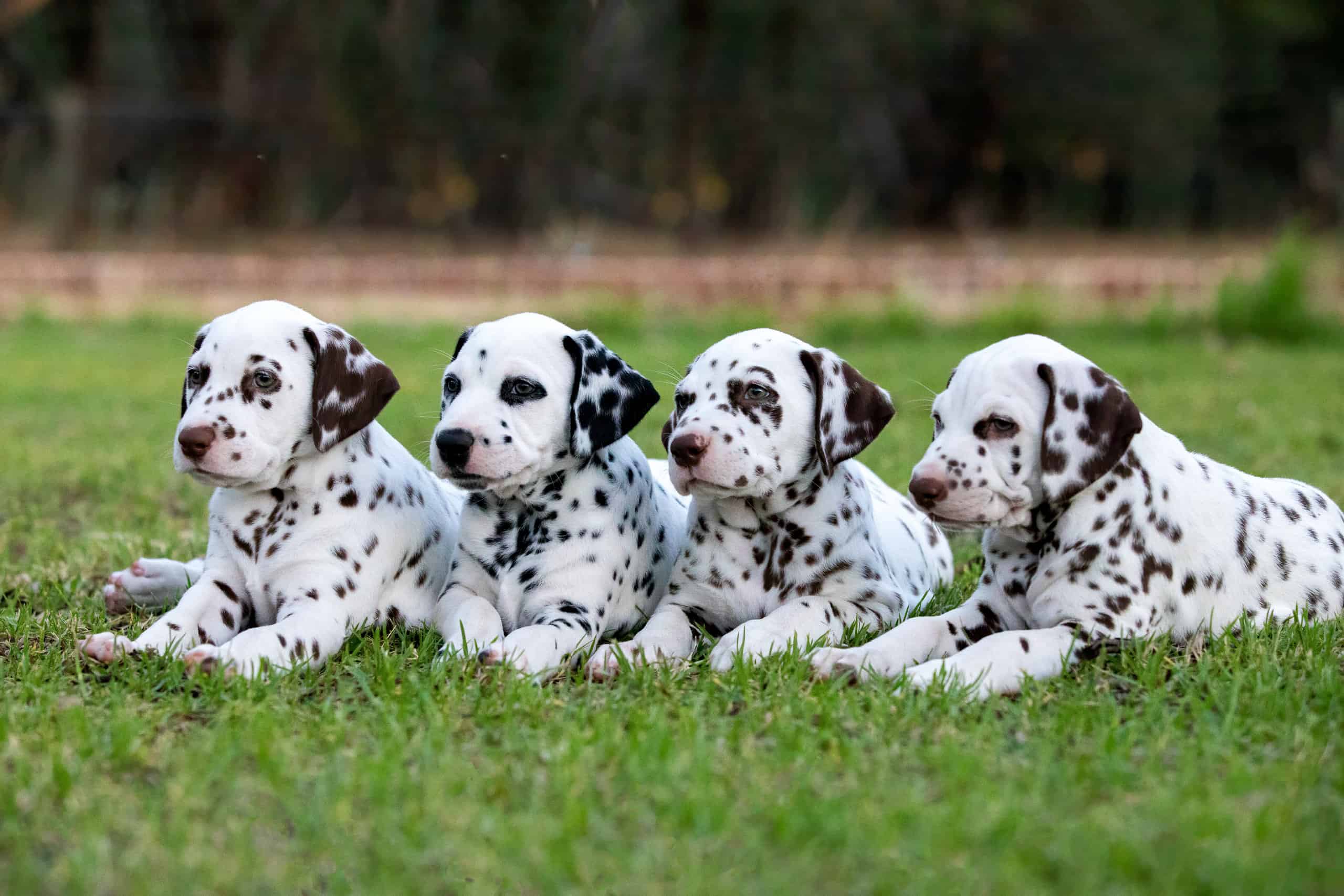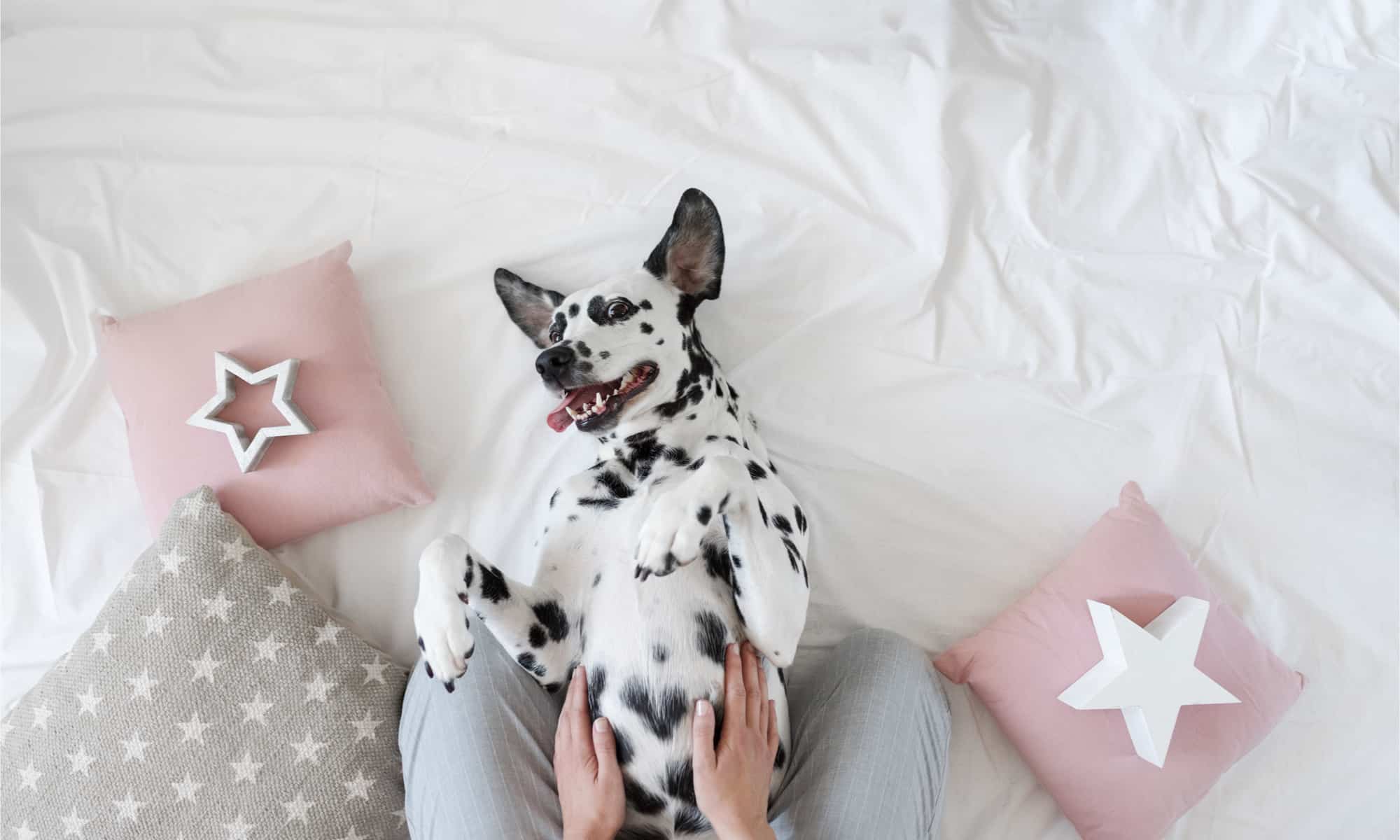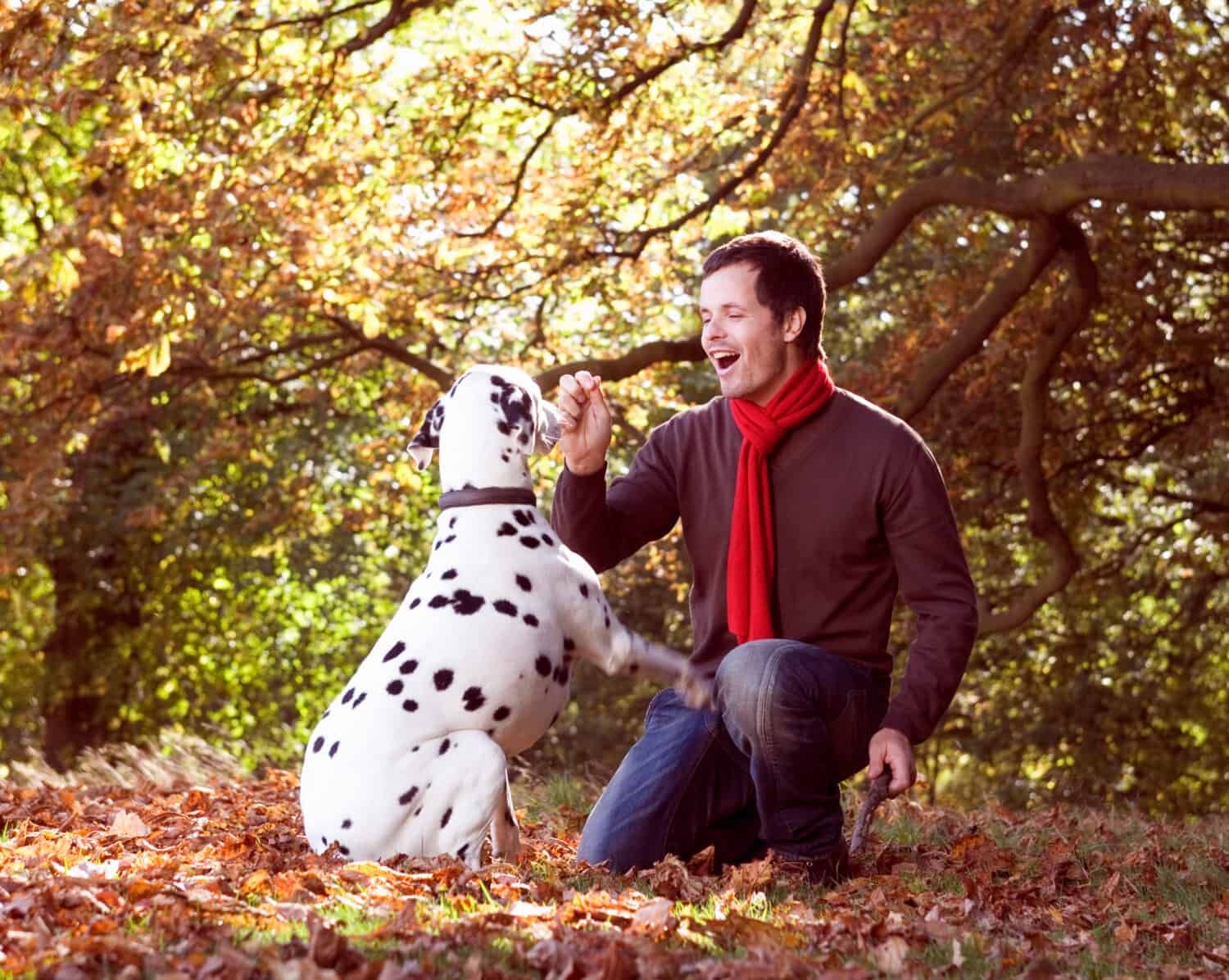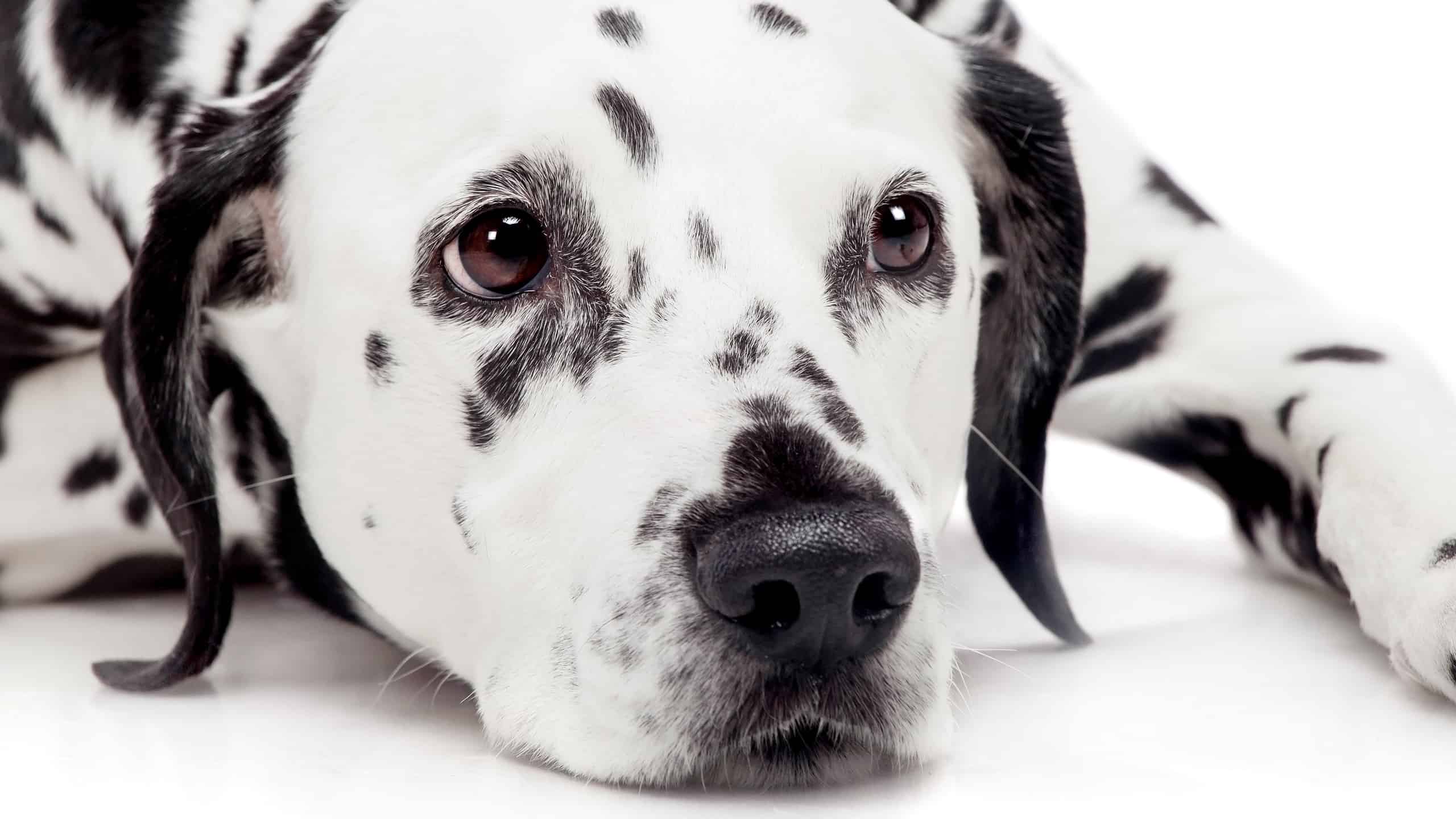Who doesn’t love Dalmatians and their beautiful spotted coats? These dogs are smart, loyal, and affectionate but may be more work than you expect! Here are some of the most common complaints about Dalmatians:
Dalmatians are hyper dogs who need plenty of exercise every day–a daily walk likely won’t be enough for them. They require knowledgeable owners who can train them well with force-free training techniques, which helps to prevent behavioral issues such as chewing and jumping.
In this article, we’ll discuss nine common complaints about Dalmatians, how to address some common behavioral issues, and more.
#1: Dalmatians Need Lots of Exercise

A short walk isn’t enough exercise for a Dalmatian.
©Beth James/Shutterstock.com
Dalmatians need plenty of exercise each day. For adults, this means running, hiking, or other vigorous activities.
When your Dalmatian is under two years old, their joints are still growing and they require low-impact activities to exert their energy without straining their joints. They should also be kept from jumping on and off of furniture for the same reasons.
Dalmatians and other large-breed dogs are prone to hip dysplasia and other joint issues, especially if they’re overexercised in their youth.
#2: Untrained Dalmatians May Jump On People

Dalmatians can be hyper dogs!
©iStock.com/Eudyptula
Jumping is a problem for many Dalmatians, and their large size doesn’t help! They can hurt people, especially children, disabled people, or elderly people who are more easily knocked over.
Train your Dalmatian not to jump by rewarding them heavily for keeping all four paws on the ground. Use a baby gate or a leash to prevent them from jumping on guests or strangers outside while they’re still learning.
#3: They Can be Destructive

Dalmatians are most destructive as puppies during their teething phase.
©iStock.com/animalinfo
As with any smart, high-energy breed, Dalmatians can be destructive if they don’t get enough attention, exercise, and mental stimulation.
They also tend to be large puppies who can do more damage to your home than smaller breeds during their teething phase.
#4: Dalmatians Bark a Lot

Dalmatians are alert to their surroundings.
©iStock.com/Eudyptula
Dalmatians make good guard dogs, in part because they’re very protective of their people and tend to bark when they spot things outside. However, this becomes a problem when your Dalmatian barks at strangers on a walk or sits at the window all day, waiting for things to yell about!
Allow your Dalmatian to bark to alert. This lets them carry out their instincts rather than fighting against them and also ensures that you’ll know if something is truly amiss.
Teach a quiet cue to stop them from barking after a few barks. Some people use the word “quiet” while others might say “thank you” as a sign that they’ve seen what’s happening, and their Dalmatian has barked enough.
#5: They Shed Considerably

You’ll find their fur on your clothes and furniture.
©RavenaJuly/Shutterstock.com
Without a lint roller, you might begin to look like Cruella De Vil with Dalmatian fur all over your clothes! They’ll also shed around the house and on furniture.
Dalmatians shed even more if their coats aren’t brushed weekly. Though their coats are short, this maintenance is important.
#6: Proper Training is a Must

Patience is key when training a Dalmatian.
©Air Images/Shutterstock.com
Dalmatians can be stubborn dogs. They’re also prone to anxiety and fearfulness. You must know how to train a dog right–without using aversive methods or tools which will only increase their fear.
Early socialization is essential. Puppy classes with force-free trainers are a great idea for Dalmatians, especially if you’re inexperienced in training dogs yourself. They teach your puppy how to behave around other dogs and people and provide great socialization in a controlled setting.
Remember that your puppy doesn’t need to play with every dog they see or get pets from each person on the street. While these playtime and greetings are important, it’s also good for them to learn how to walk past others nicely and to practice obedience while others are around.
#7: They Don’t do Well in the Cold

Dalmatians aren’t built for cold weather.
©iStock.com/:undefined undefined
Dalmatians have short, single-layered coats. They don’t have the insulation provided by a double coat like many other breeds.
This means they don’t tend to do well in the cold and may need a winter jacket to keep them warm.
#8: They’re Prone to Sunburn

Too long in the sun can cause sunburn for Dalmatians.
©iStock.com/Irina Nedikova
While they don’t do well in the cold, Dalmatians also don’t necessarily do well in the heat either. Their short, light-colored coat makes them particularly prone to sunburn.
You’ll need to apply doggy sunscreen (not human sunscreen!) regularly, avoid long trips outside in intense sun, and opt to stay in the shade with them when possible.
#9: Dalmatians are Prone to Health Problems

It’s important to prepare for your Dalmatian’s vet visits, especially if they get sick.
©Rosa Jay/Shutterstock.com
Dalmatians are prone to genetic disabilities and health problems including:
- Deafness
- Eye conditions
- Skin conditions
- Hip dysplasia
- Thyroid disease
Reputable breeders will screen for genetic health issues and have CHIC numbers available for both parents. This allows the public to see the results. Please walk away from a breeder who cannot provide this information, who doesn’t keep health tests up to date, or who breeds dogs with poor test results.
It’s also important to have a plan for when your Dalmatian inevitably gets sick, whether it happens early in life or they stay healthy until their senior years. The best plan for most people is to purchase pet insurance the moment you adopt your dog.
The photo featured at the top of this post is © RavenaJuly/Shutterstock.com
Ready to discover the top 10 cutest dog breeds in the entire world?
How about the fastest dogs, the largest dogs and those that are -- quite frankly -- just the kindest dogs on the planet? Each day, AZ Animals sends out lists just like this to our thousands of email subscribers. And the best part? It's FREE. Join today by entering your email below.
Thank you for reading! Have some feedback for us? Contact the AZ Animals editorial team.






